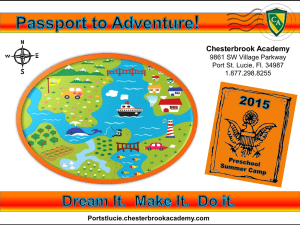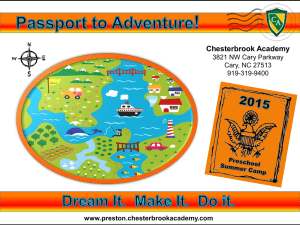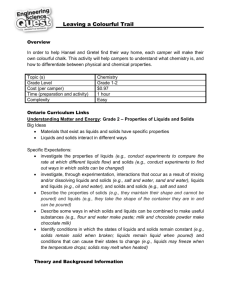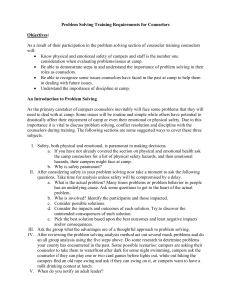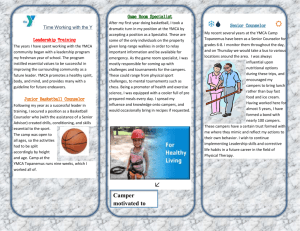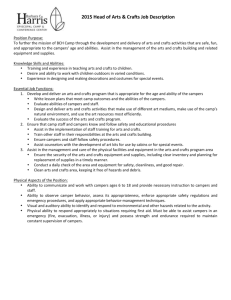20120307154251001
advertisement
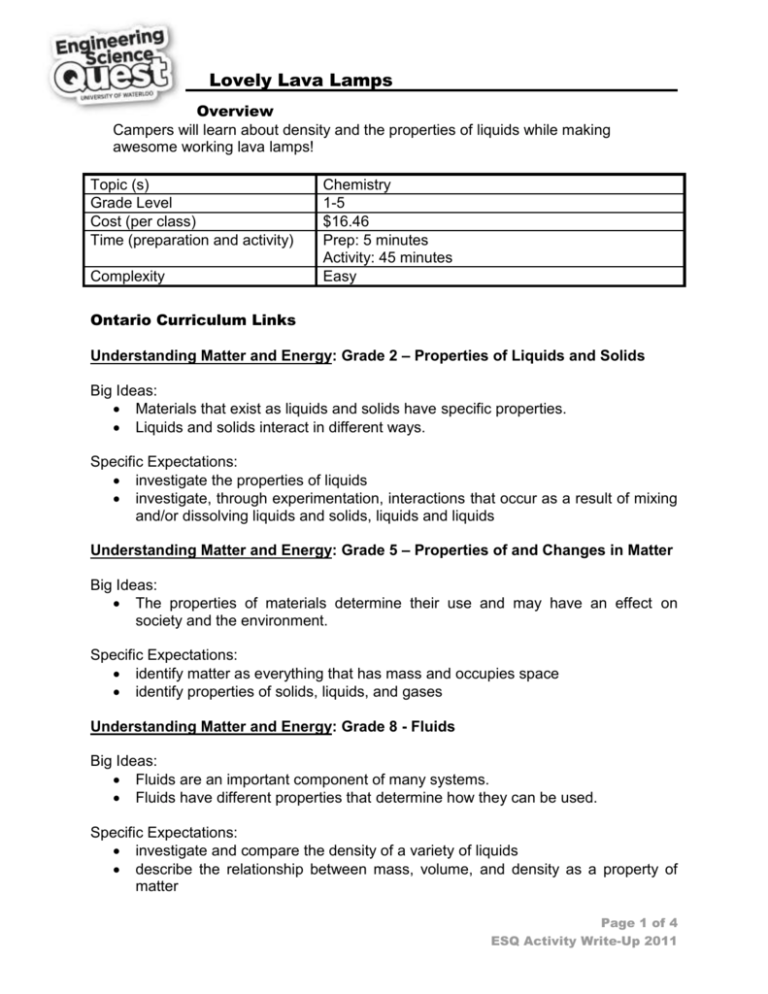
Lovely Lava Lamps Overview Campers will learn about density and the properties of liquids while making awesome working lava lamps! Topic (s) Grade Level Cost (per class) Time (preparation and activity) Complexity Chemistry 1-5 $16.46 Prep: 5 minutes Activity: 45 minutes Easy Ontario Curriculum Links Understanding Matter and Energy: Grade 2 – Properties of Liquids and Solids Big Ideas: Materials that exist as liquids and solids have specific properties. Liquids and solids interact in different ways. Specific Expectations: investigate the properties of liquids investigate, through experimentation, interactions that occur as a result of mixing and/or dissolving liquids and solids, liquids and liquids Understanding Matter and Energy: Grade 5 – Properties of and Changes in Matter Big Ideas: The properties of materials determine their use and may have an effect on society and the environment. Specific Expectations: identify matter as everything that has mass and occupies space identify properties of solids, liquids, and gases Understanding Matter and Energy: Grade 8 - Fluids Big Ideas: Fluids are an important component of many systems. Fluids have different properties that determine how they can be used. Specific Expectations: investigate and compare the density of a variety of liquids describe the relationship between mass, volume, and density as a property of matter Page 1 of 4 ESQ Activity Write-Up 2011 Lovely Lava Lamps Theory & Background Information Chemistry Chemistry is a science that studies the properties of substances. Chemistry is also analyzing the combinations and reactions of substances. Properties of Matter Matter is anything that has mass and takes up space. Everything is made of matter. Most matter on Earth exists in one of three phases: solid, liquid, or gas. Some properties of matter include weight, mass, volume, and density. Density Density is a measure of the “compactness” of matter. It tells how much mass is packed into a given space. A steel pin has the same density as a steel beam. The beam is thousands of times more massive than the pin, but it also takes up thousands of times more space, so the ratio of mass to volume (density) remains the same for both. The density of a small pebble is greater than the density of a huge redwood tree even though the tree is much larger. The mistake most people make in thinking about density is to consider only the size or mass instead of both of them put together. Something that floats must be less dense than the liquid it is floating on. Oil stays above water because it is less dense than water. Air rises in water because it is also less dense than water. Hydrophilic/Hydrophobic Materials Water molecules are polar, and will only attract/mix with other polar substances. Hydrophobic substances are “water-hating” and often nonpolar, and therefore repel water and will not mix with it. Common hydrophobic materials include wax, and oil. Hydrophilic materials are “water-loving” and are often polar. This means they mix will with water. An example of a hydrophilic material is food colouring. Materials Per Camper: Clear water bottle (WITH cap) 1 cup water 1 cup vegetable oil 1 alka seltzer tablet Food colouring Per Camp: 6 pack of yellow highlighters Funnel Measuring cup Pliers Black light Page 2 of 4 ESQ Activity Write-Up 2011 Lovely Lava Lamps Procedure Preparations 1. Get a pitcher of water filled with 1 cup water per camper. 2. Using pliers, pull off the bottom end cap of a highlighter, and pull out the ink tube. 3. Squeeze the tube from top to bottom, pouring the ink into pitcher of water. 4. Repeat for all 6 highlighters. (May want to test pitcher under black light to ensure the solution is not too dilute to glow) Introduction 1. Begin with a quick discussion of chemistry, asking the campers what they think chemists study. a. Chemistry is a science that studies the properties of substances or chemicals, analyzing their combinations and reactions b. Important field that can be used in many different ways in the lab, from making medicines to figuring out how to make plastic stronger 2. Ask campers if they know any properties of matter: a. Matter is anything that has mass and takes up space b. Everything is made of matter c. Most matter on Earth exists in one of three phases: solid, liquid, or gas d. Some ways of measuring matter include weight, mass, volume, and density 3. Ask campers if they know what density means? How is density different from mass and volume? a. Density is a measure of how compact matter is. b. It is the amount of mass in a certain volume of space. c. Density is not a simple comparison of the lightness or heaviness of matter; it is instead, a comparison of the heaviness or lightness of the same volume (mass per unit volume) of matter d. A steel pin has the same density as a steel beam even though the beam is thousands of times more massive than the pin, but it also takes up thousands of times more space, so the ratio of mass to volume (density) remains the same for both. 4. Make sure the students understand why oil is less dense than tap water. a. There are less molecules of oil per unit volume than water molecules in the same volume. b. Because oil is less dense it will float on water, ex. Salad dressing Activity 1. Explain to campers that they will be using the different densities of water and oil to create awesome lava lamps! 2. Pour 1 cup of the highlighter water into each camper’s bottle. 3. Have a leader use a funnel to slowly pour 1 cup of vegetable oil into the water bottle, ensuring there is a little empty space at the top of the bottle. (Allow kids to pour the oil if able) 4. Wait until oil and water fully separate. 5. Add 4 drops of food colouring of the camper’s choice into the bottle. Page 3 of 4 ESQ Activity Write-Up 2011 Lovely Lava Lamps a. Ask campers why they think the food colouring mixes with the water but not the oil. (Because it has a similar density to water) 6. Have campers break their alka seltzer tablet in half and add one half to the bottle. Turn off the lights and shine the black light on campers’ bottles to see them glow while the effect is occurring. 7. Once effect stops ensure campers put lid tightly on water bottle to avoid spilling. Allow campers to bring second half of alka seltzer home to show parents, or add then to keep effect going. Activity Accommodations and Extensions Accommodations Assist campers with fine motor weakness by breaking the alka seltzer tablet in half for them. Assist campers filling bottle with water if needed Simplify discussion on density for younger campers Extensions Shine a flash light up from underneath the bottle for a true lava lamp effect For more advanced campers discuss intermolecular polarity and its affect on keeping the different substances together If extra time ask campers to experiment with different amounts of alka seltzer to determine its effect on the number and size of bubbles, as well as the time the reaction continues Discuss dissolving, and physical/chemical changes. Discuss hydrophilic and hydrophobic substances, and how this relates to the mixing of oil and water Safety Considerations Make sure younger campers don’t eat any materials. Make sure reaction has completely stopped before the campers put the lids on the water bottles, or else pressure will build up and cap could shoot off. Resources Looming Liquid Layers, Edison 2007 Lava Lamps, SuperNOVA, Actua Exchange http://www.encyclopedia.com/doc/1G2-3409800286.html Page 4 of 4 ESQ Activity Write-Up 2011
